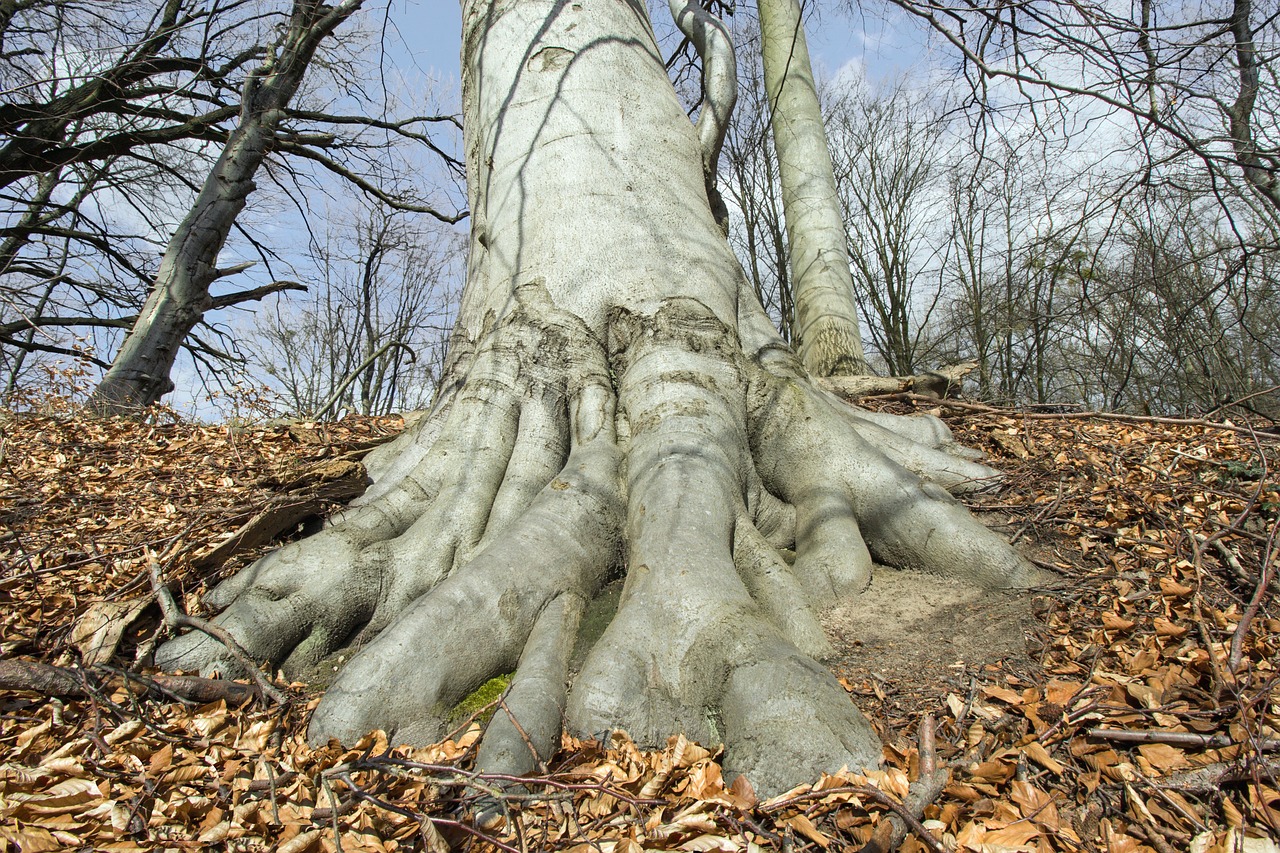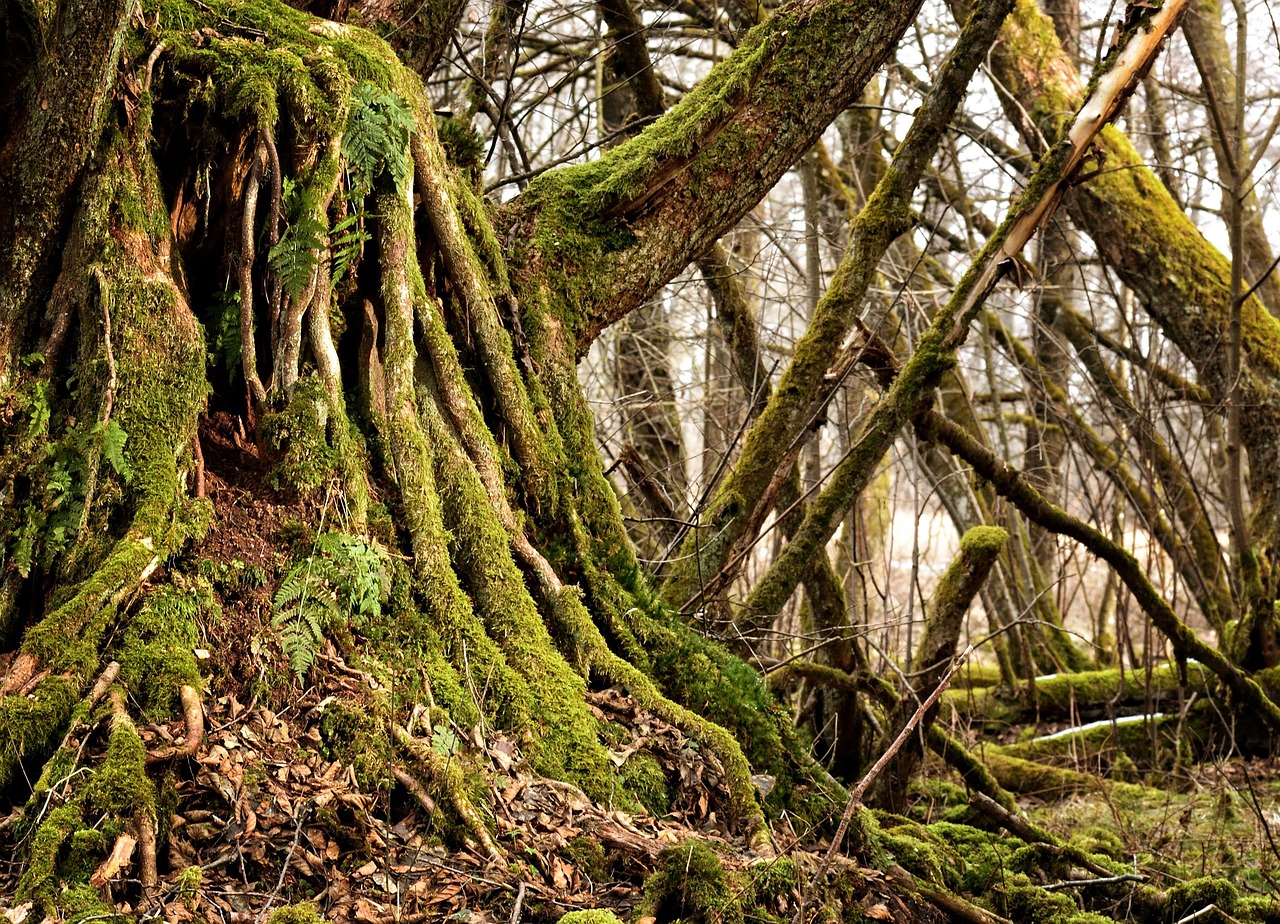Tree root growth in winter can significantly affect soil stability. As trees enter dormancy, their roots continue to grow, albeit at a slower rate. This growth helps anchor the soil, reducing erosion and maintaining structural integrity, which is crucial during winter storms and thaw cycles.
Understanding Tree Root Growth
Tree roots play a vital role in the overall health of the ecosystem. They provide stability to the tree and help anchor it in the soil. While many people associate tree growth with the warmer months, roots are active even during winter. Understanding this growth is essential for grasping its effects on soil stability.

During winter, trees enter a dormant phase. This dormancy is often misunderstood as a complete halt in growth. In reality, roots continue to expand and search for water and nutrients. The extent of this growth varies depending on the tree species, soil conditions, and climate factors.
The Role of Roots in Soil Stability
Roots contribute to soil stability in several critical ways:
- Anchoring Soil: Roots create a network that holds soil particles together, reducing erosion caused by wind and water.
- Improving Soil Structure: The organic matter from decaying roots enhances soil texture and aeration.
- Water Absorption: Roots help absorb moisture, which is important for preventing saturation and subsequent landslides during thaw periods.
To illustrate the relationship between tree roots and soil stability, consider the following table that summarizes various tree species and their root systems:

| Tree Species | Root System Type | Effect on Soil Stability |
|---|---|---|
| Oak | Deep Taproot | Excellent anchoring and erosion control |
| Pine | Fibrous Roots | Good surface stability; prevents erosion |
| Willow | Shallow Roots | Stabilizes riverbanks; good water absorption |
| Maple | Wide-Spreading Roots | Effective at improving soil structure |
Factors Affecting Root Growth in Winter
Several factors influence how tree roots grow during the winter months. These include:
- Soil Temperature: Cooler temperatures can slow root growth but do not stop it entirely.
- Soil Moisture: Adequate moisture is critical for root expansion. Dry soils can hinder growth.
- Tree Species: Different species adapt uniquely to winter conditions, impacting their root growth rates.
The interaction between these factors can lead to varying degrees of root activity across different regions. In areas with milder winters, roots may continue to grow more actively than in regions where temperatures drop significantly. Understanding these differences can help inform land management practices that promote soil stability.
The Importance of Soil Stability in Winter
Soil stability is crucial for preventing landslides, erosion, and property damage during winter months. When the ground is saturated from melting snow or rain, unstable soil can lead to significant risks.

The presence of tree roots aids in minimizing these risks by holding the soil together. Additionally, they help maintain moisture levels, which is vital for supporting not only tree health but also the overall landscape.
This connection between tree root growth and soil stability becomes increasingly important as climate patterns change. Variability in precipitation and temperature can create conditions that challenge both trees and soil structures.
As we explore further into this topic, we will examine how different climatic conditions impact root growth and the implications for soil stability throughout the winter months.
Climatic Influences on Root Growth
The growth of tree roots during winter is significantly affected by climatic conditions. Factors such as temperature, moisture levels, and snow cover can either enhance or inhibit root development. Understanding these influences is essential for predicting how trees will respond to winter conditions and their subsequent impact on soil stability.

Temperature Effects
Temperature plays a critical role in root growth. As temperatures drop, root activity generally slows down, but it does not stop completely. The following are some key points regarding temperature effects on root growth:
- Optimal Range: Most tree roots grow best within a specific temperature range. For many species, this range is between 32°F and 50°F (0°C to 10°C).
- Cold Stress: Extreme cold can cause roots to become dormant. This dormancy can lead to limited nutrient uptake, which affects overall tree health.
- Thaw Cycles: Periods of thawing followed by freezing can create a dynamic environment that encourages root growth as trees seek moisture.
Moisture Levels and Their Importance
Moisture availability is another significant factor that influences root growth in winter. The relationship between soil moisture and root health can be summarized as follows:
- Soil Saturation: When soils are saturated from melting snow or rain, roots can access water easily, promoting growth.
- Drought Conditions: Conversely, if the soil becomes too dry due to a lack of precipitation, root growth can be stunted, impacting the tree’s ability to stabilize the soil.
- Impact of Frost: Frozen soil can limit moisture availability to roots, further complicating their ability to grow during winter.
The following table illustrates the relationship between soil moisture levels and root growth:
| Soil Moisture Level | Root Growth Activity | Implications for Soil Stability |
|---|---|---|
| Saturated | High | Increased stability due to strong anchoring |
| Optimal | Moderate | Stable, but needs monitoring |
| Dry | Low | Reduced stability; increased erosion risk |
| Frozen | Minimal | Very low stability; high erosion risk during thaw |
The Role of Snow Cover
Snow cover has both positive and negative effects on tree root growth during winter. Its presence can impact soil conditions in important ways.
Benefits of Snow Cover
Snow acts as an insulating layer for the soil. This insulation provides several benefits:
- Temperature Regulation: Snow helps to moderate soil temperatures, reducing the risk of extreme cold that can harm roots.
- Moisture Retention: As snow melts, it gradually provides moisture to the soil, which is crucial for root hydration during early spring.
- Erosion Prevention: A snow layer can protect the soil from wind erosion and surface runoff.
Challenges Posed by Snow Cover
Despite its benefits, snow cover also presents challenges for tree roots:
- Saturation Risk: Heavy snow accumulation followed by rapid melting can lead to waterlogged soils, which may suffocate roots.
- Snow Load: The weight of heavy snow can cause physical damage to trees and their root systems.
- Pest Habitat: Snow cover can provide an environment for pests that may damage roots when conditions warm.
The interplay between snow cover and root growth is complex. Trees must adapt to these conditions to ensure their survival and maintain soil stability throughout the winter months. In the following sections, we will explore how different tree species exhibit unique adaptations that allow them to thrive under varying winter conditions.
Tree Species and Their Winter Adaptations
Different tree species exhibit a variety of adaptations that enable them to survive and thrive during the challenging winter months. These adaptations not only affect how they grow but also influence their role in maintaining soil stability. Understanding these variations can provide insight into effective land management practices.
Deciduous Trees
Deciduous trees are known for shedding their leaves in winter. This adaptation reduces water loss through transpiration, allowing them to conserve moisture during colder months. However, their roots remain active beneath the snow. Key characteristics of deciduous trees include:
- Root Depth: Deciduous trees often develop deep taproots, which help anchor them securely in the soil and access moisture stored deeper underground.
- Root Growth Patterns: These trees may exhibit increased lateral root growth in the fall, creating a broader network that stabilizes the soil.
- Moisture Utilization: Even during dormancy, roots can absorb water from melting snow, aiding in their survival and maintaining soil moisture levels.
Coniferous Trees
Coniferous trees, such as pines and spruces, have different adaptations suited to cold climates. Their needle-like leaves minimize water loss and help them withstand harsh winter conditions. The following aspects are notable:
- Shallow Root Systems: Conifers typically have shallower root systems that spread horizontally. This structure helps stabilize the soil surface even when the ground is frozen.
- Winter Photosynthesis: Some conifers can photosynthesize during winter, utilizing sunlight that reflects off snow. This process supports root growth and health.
- Flexible Branches: Their flexible branches can handle heavy snow loads, reducing damage and allowing the tree to maintain its form.
Impact on Soil Stability
The differences in root systems among tree species have significant implications for soil stability during winter. By examining various factors, we can better understand how tree roots contribute to soil integrity.
Root Density and Soil Anchoring
The density of a tree’s root system directly influences its ability to stabilize soil. Trees with denser root networks are more effective at preventing erosion. The following points highlight this relationship:
- Soil Compaction: Roots compact the soil around them, creating a more stable structure that resists displacement from wind and water.
- Erosion Control: Trees with extensive root systems can significantly reduce soil erosion, especially on slopes where the risk is higher.
- Moisture Retention: Well-established roots help retain moisture in the soil, promoting healthy growth and reducing runoff during thaw cycles.
Diversity in Root Structures
Diverse root structures among different tree species contribute to a balanced ecosystem. A variety of root types allows for better overall soil health and stability:
- Complementary Growth: Different root types can complement one another, leading to enhanced nutrient uptake and moisture retention.
- Biodiversity Benefits: A mix of tree species strengthens the ecosystem by providing habitats for wildlife and promoting biodiversity.
- Resilience to Climate Change: Diverse tree populations are often more resilient to changing climate conditions, ensuring better stability for soils.
The Role of Mycorrhizal Fungi
An important factor in soil stability and root growth is the presence of mycorrhizal fungi. These beneficial fungi form symbiotic relationships with tree roots, enhancing their growth and efficiency. Key benefits include:
- Nutrient Absorption: Mycorrhizal fungi improve nutrient absorption, particularly phosphorus, which is essential for root development.
- Soil Structure Improvement: The fungal networks help bind soil particles together, improving soil structure and enhancing stability.
- Water Retention: Fungi increase the soil’s ability to retain moisture, which is particularly beneficial during dry winter spells.
The interaction between tree roots and mycorrhizal fungi creates a robust underground ecosystem that supports tree health and enhances soil stability during winter months. As we delve deeper into this topic, we will examine specific case studies that illustrate these concepts in action.
Case Studies in Tree Root Growth and Soil Stability
To understand the practical implications of tree root growth in winter, it is beneficial to examine specific case studies. These examples illustrate how different tree species respond to winter conditions and the resulting effects on soil stability.
Case Study 1: Oak Trees in Temperate Regions
In temperate regions, oak trees are known for their extensive root systems. Studies have shown that during winter, oak roots continue to grow, even under snow cover. The roots reach deeper into the soil, which helps anchor the tree more securely. The findings from this study highlighted several points:
- Soil Erosion Reduction: The deep taproots of oak trees significantly reduce soil erosion during winter rains and thaws.
- Moisture Utilization: Oaks can access deeper water reserves, ensuring they remain hydrated even in dry winter spells.
- Impact on Surrounding Flora: The presence of oak trees enhances the stability of surrounding vegetation by promoting a healthier soil structure.
Case Study 2: Pine Forests in Northern Climates
Pine forests serve as another compelling case study. In northern climates, where winters are harsh, pine trees exhibit unique adaptations for survival. Research conducted in these areas revealed:
- Shallow Root Systems: Pines have shallow but widespread root structures that efficiently stabilize loose soils.
- Snow Accumulation Benefits: The needles of pine trees help retain snow, which in turn provides insulation for roots and slow moisture release as it melts.
- Resilience Against Erosion: The dense network of pine roots effectively prevents soil erosion on slopes, demonstrating their importance in maintaining landscape stability.
Case Study 3: Riparian Zones with Willows
In riparian zones, willows thrive along riverbanks and exhibit rapid root growth even in winter. This growth is crucial for stabilizing soils in these often-saturated environments. Key findings from studies on willows include:
- Flood Mitigation: Willows help absorb excess water during floods, reducing the risk of soil saturation and subsequent erosion.
- Wildlife Habitat: Their robust root systems provide critical habitat for various wildlife species, contributing to biodiversity.
- Soil Fertility Enhancement: The organic matter from decaying willow roots enriches the soil, promoting further plant growth and stability.
Final Thoughts
The interplay between tree root growth and soil stability during winter is a complex yet fascinating subject. Different species exhibit unique adaptations that not only enhance their survival but also contribute significantly to the health of the ecosystem. Understanding these relationships is vital for effective land management practices, particularly in light of changing climate conditions.
As we have seen, tree roots play a pivotal role in anchoring the soil, preventing erosion, and maintaining moisture levels. The beneficial interactions with mycorrhizal fungi further enhance these effects, creating a stable environment for both trees and surrounding flora. Case studies demonstrate that different species respond to winter conditions in diverse ways, highlighting the importance of biodiversity in forest ecosystems.
Going forward, continued research into tree root systems and their response to environmental factors will be essential. This knowledge not only aids in conservation efforts but also informs strategies for urban planning and agricultural practices. By nurturing healthy tree populations and understanding their role in soil stability, we can promote resilience against the challenges posed by winter and changing climate patterns.
In conclusion, the study of tree root growth in winter is not merely an academic exercise; it has real-world implications for environmental health, soil conservation, and ecosystem stability. By fostering a deeper understanding of these relationships, we can ensure the sustainability of our landscapes for future generations.
